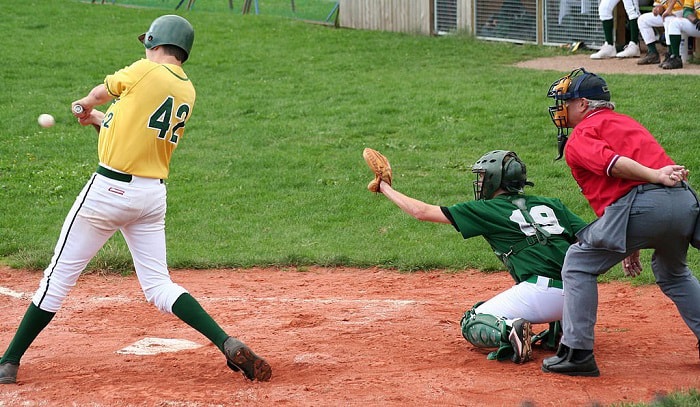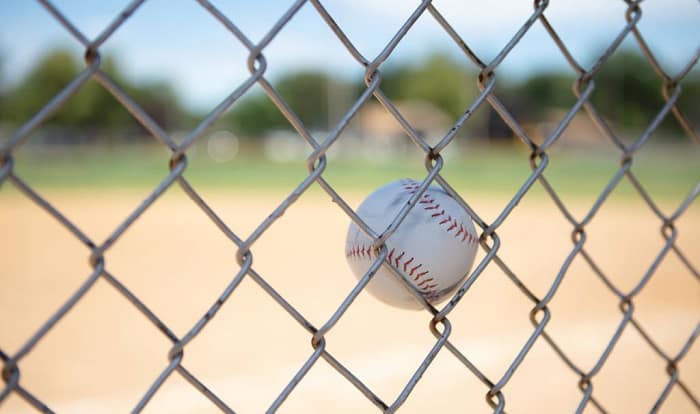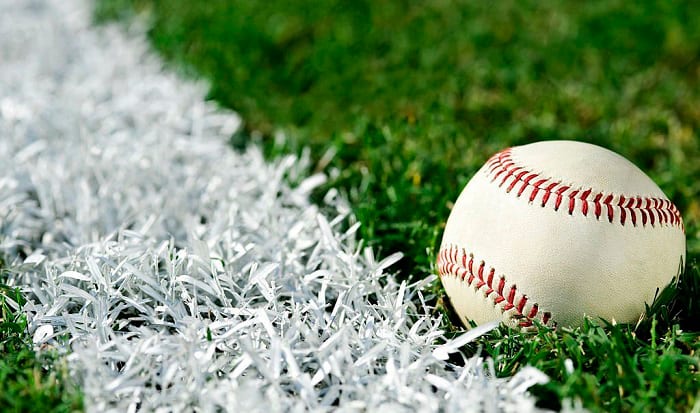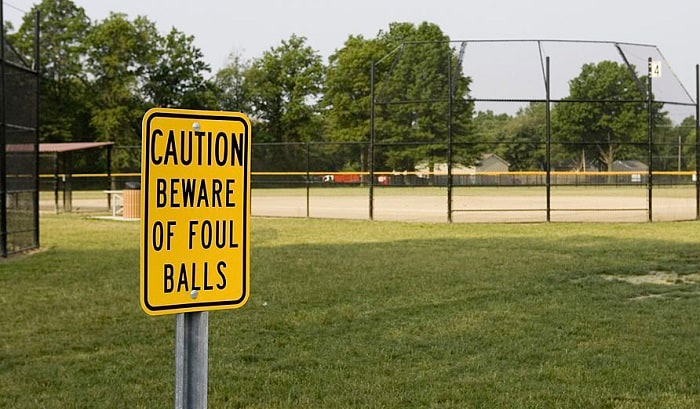The excitement is on as a batter hits what looks like a good single towards the left side of the field. The crowd yells loudly as he dashes off to the first base. But the umpire raises both hands, declares a foul ball, and pauses play.
What is a foul ball in baseball? In a nutshell, it is any batted ball that lands outside the fair territory of the baseball field. However, one must understand what constitutes this umpire call to get a more specific foul ball definition.
Contents
- Fair Territory and Foul Territory
- What Is Considered a Foul Ball in Baseball?
- What Happens on a Foul Ball in Baseball?
- Does a Foul Ball Count as a Strike or a Ball?
- FAQs
- 1. If you touch a ball in foul territory is it fair?
- 2. Can a base runner advance on a foul ball?
- 3. Is it a foul ball when the ball settles directly on the foul line?
- 4. Is it a foul ball if the ball hits the foul pole?
- 5. Can a foul ball revert to a fair ball?
- 6. What is the main difference between infield and outfield foul balls?
- 7. What is the limit to the number of foul balls?
- Conclusion
Fair Territory and Foul Territory
A foul ball is one important batted ball rule every baseball fan should know to get a good grasp of how the game goes. Understanding a foul ball starts with knowing where fair territory and foul territory are on the baseball field.
- Fair territory is the section of the baseball field INSIDE the lines from the home plate to the first and third bases extending perpendicularly upwards to the fence.
- Foul territory is any section of the baseball field and stadium OUTSIDE fair territory, including on-deck circles, dugouts, and stands.
Fair and foul territories in the field are clearly demarcated with baseball foul lines and poles.
Foul lines are marked with lime powder starting from the home plate and passing through the first base on the right and the third base on the left. They extend up to two foul poles, one at each corner of the outfield.
Foul poles serve as vertical markers of foul territory on the outfield which can be difficult to see at a distance. There are two foul poles in a baseball field, which help umpires judge fly balls, especially when hit above the fence.
What Is Considered a Foul Ball in Baseball?
Now that you know where the fair and foul territories are in baseball, it will be a lot easier to understand the different foul ball rules. Let’s look at different scenarios where an umpire may rule a foul ball.
- A ball hit outside the two foul lines is considered a foul ball when the ball first bounces on foul territory between home base and first base or home base and third base.
- A foul ball is called when a batter hits a ball that drives beyond first or third base on or over foul territory.
- A batted ball that originally lands in the infield and then rolls or bounces to foul territory before traveling past the first or third base is also considered a foul ball.
- If the batted ball comes in contact with a player, an umpire, or anything aside from natural turf while on or over foul territory, a foul ball is called.
- A foul ball is also called when the batted ball first hits any of the bases—including the home plate—then settles or is touched in foul territory.
- A fly ball may be ruled as a foul ball depending on its position in relation to the foul line and pole. Whether the fielder is on fair or foul territory when he touches the ball is immaterial.
What Happens on a Foul Ball in Baseball?
If the foul ball is caught by any member of defense before it touches the ground, the batter is out. The ball remains live or in play, and base runners may advance at their own risk after tagging up.
Tagging up means remaining on or re-touching the starting base until after the foul ball is caught by a fielder.
When a batter hits a foul ball that isn’t caught before it makes contact with the ground, the ball is ruled “dead” and play is temporarily paused. Base runners return to their starting base since they cannot advance on a dead ball. The batter also returns to the batting box.
Does a Foul Ball Count as a Strike or a Ball?
A strike is added when a batter hits a foul ball, provided he has less than two strikes in the play. If he has already accumulated two strikes, no strike is added to the count.
If a batter with two accrued strikes bunts a foul ball, however, the bunt is counted as a strike, and the umpire declares a strikeout.
FAQs
Here are quick answers to frequently asked questions about foul balls.
1. If you touch a ball in foul territory is it fair?
No. A foul ball is not about where you are but where the ball is when it lands. So even if your feet are within fair territory, but the ball is in foul territory when touched, it’s still a foul ball.
2. Can a base runner advance on a foul ball?
It depends. If the foul ball hits the ground before it is caught, runners cannot advance. But if the foul ball is caught before hitting the ground, a runner can tag up and advance to the next base.
3. Is it a foul ball when the ball settles directly on the foul line?
No. Ironically, foul lines are considered part of fair territory, so a ball that stops and settles directly on them before a fielder touches it is ruled a fair ball.
4. Is it a foul ball if the ball hits the foul pole?
No. Foul poles are part of fair territory. A ball that hits the foul pole is considered a fair ball and awarded a home run.
5. Can a foul ball revert to a fair ball?
Yes. If the batted ball initially lands in foul territory and then ricochets into fair territory before passing first or third base, it is a fair ball.
6. What is the main difference between infield and outfield foul balls?
Infield foul balls are determined only after the ball comes to a complete stop or is picked up by a fielder. Outfield foul balls are quickly called the moment the ball touches the ground.
7. What is the limit to the number of foul balls?
There is no limit to the number of foul balls a batter can hit.
Conclusion
Foul balls in baseball come in all sorts. Most people have a hard time understanding what they are until they read the baseball rule books thoroughly.
Now that you’ve got answers to what is a foul ball in baseball, it will be easier to keep an eye out for them the next time you’re at a baseball game. We hope you share this article with other baseball enthusiasts you know!

A powerful swing and the ball is flying across the field, just one hit, and we might never forget the thrill it brings. I do not know about you, but I never do. Every baseball game is the chance to compete with others and cooperate with your teammate. It is among my biggest passions.

















